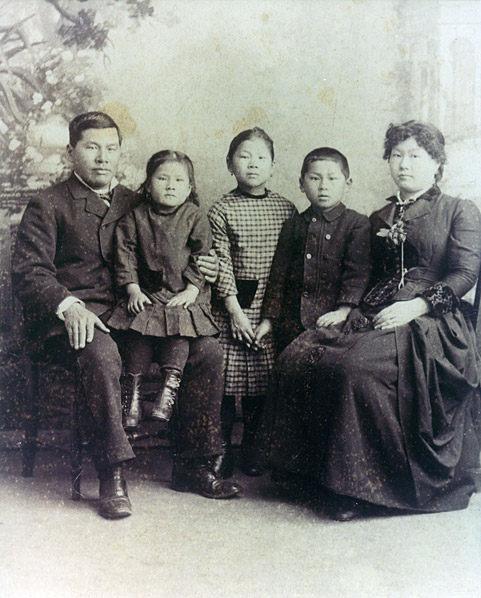National Women’s History Museum presents Chinese American Women: A History of Resilience and ResistancePosted in Articles, Asian Diaspora, Biography, History, Law, Media Archive, United States, Women on 2016-06-10 15:14Z by Steven |
National Women’s History Museum
2016-06-08
 Joseph, Emily, Mamie, Frank, and Mary Tape. |
Tape v. Hurley
Mary Tape was a biracial Chinese American woman who believed that her daughter, Mamie, should have the same access to education as white children in San Francisco. In particular, Mary Tape wanted her daughter to be able to attend public school. When the local school principal, Jennie Hurley, stood in the schoolhouse door to bar Mamie’s entrance on the sole grounds that she was Chinese, Mary Tape took Jennie Hurley to court.
In 1885, almost seventy years before the famous Supreme Court Decision Brown v. Board of Education desegregated American public schools, Mary Tape sued the San Francisco School District to offer public education to all Chinese children. Tape v. Hurley was one of the most important civil rights decisions in American history. In this ground breaking case, Superior Court Judge James Maguire ruled that Chinese children must have access to public education: “To deny a child, born of Chinese parents in this state, entrance to the public schools would be a violation of the law of the state and the Constitution of the United States.”…
Read the entire article here.



